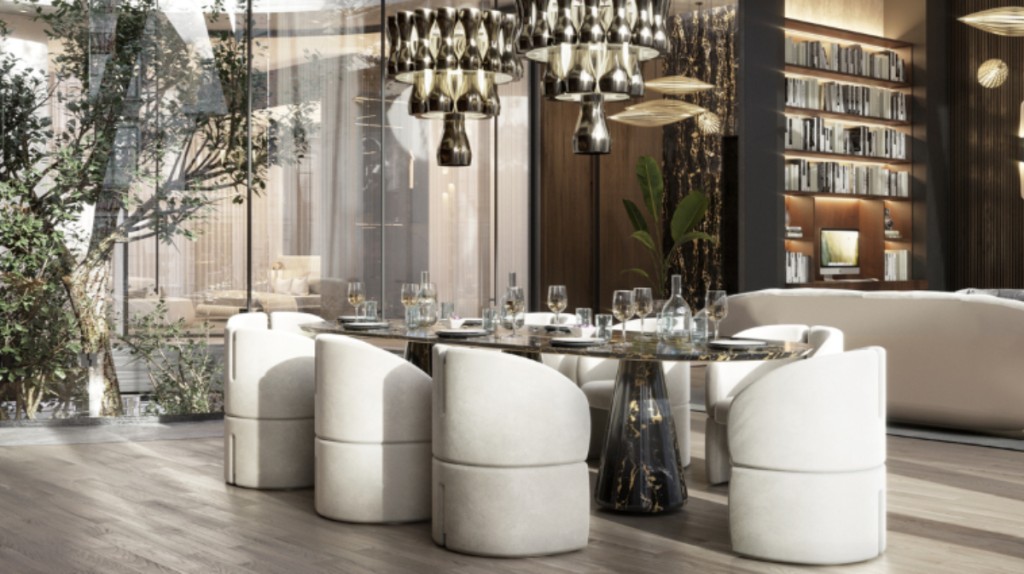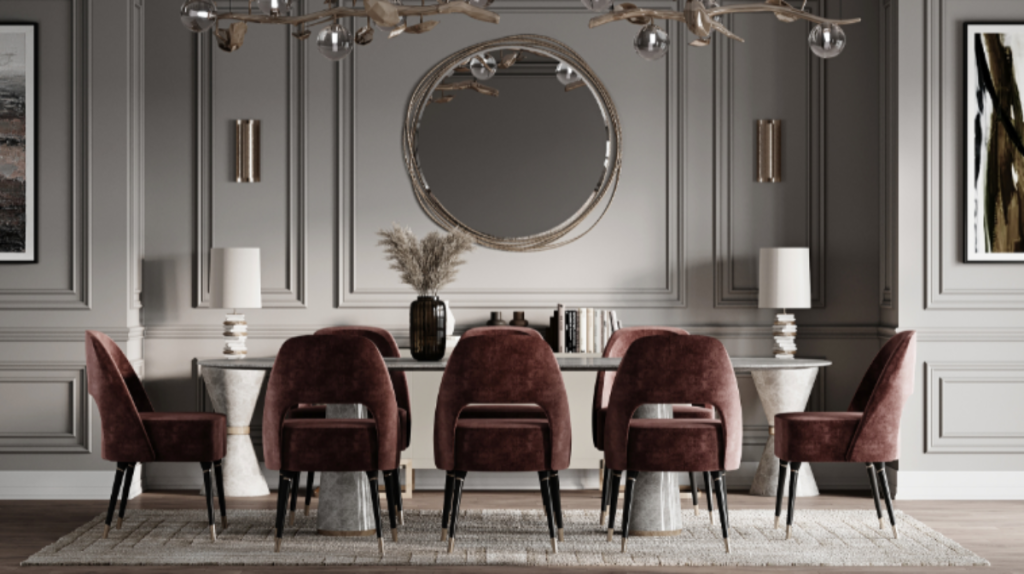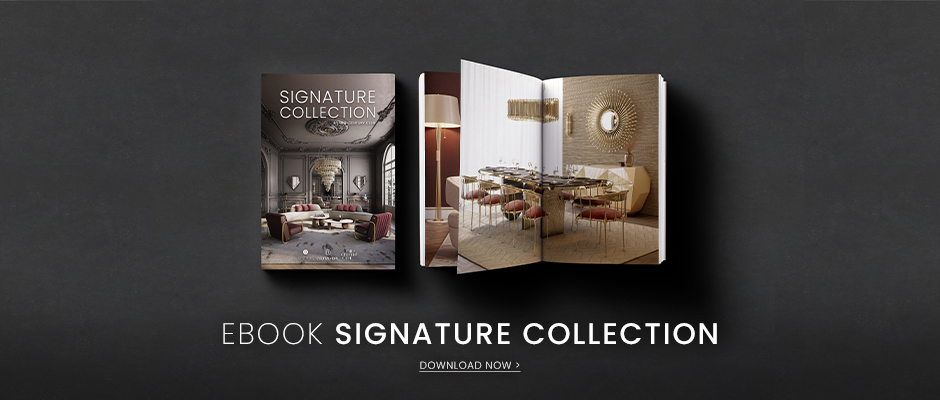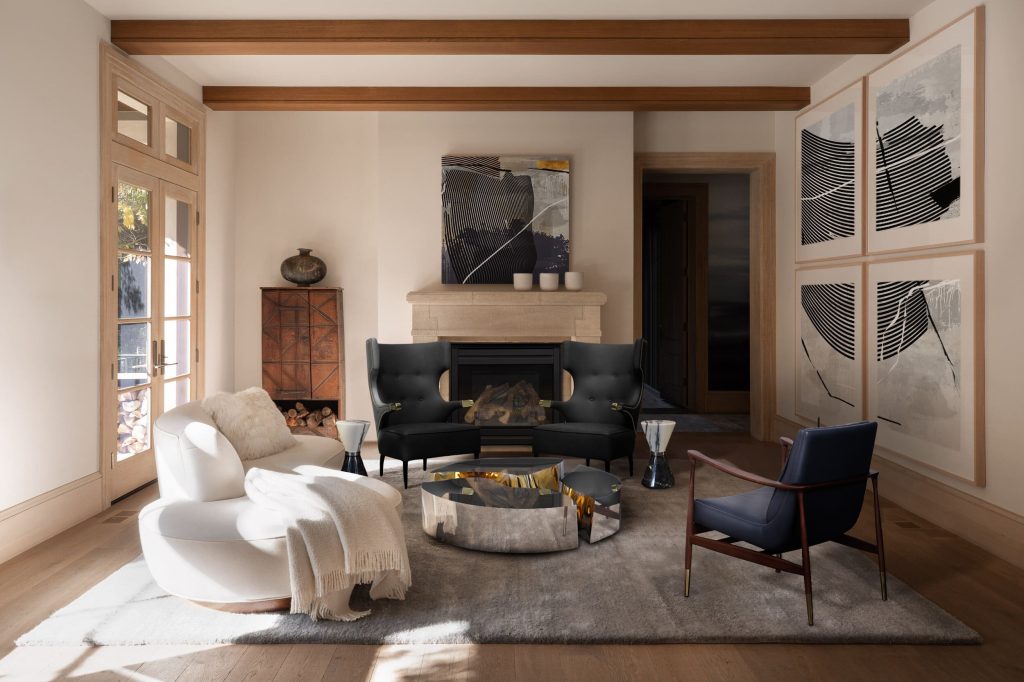When we talk about interior design, what often sets apart a good room from a great one is craftsmanship. It’s more than aesthetics — it’s a principle, a philosophy that merges function, artistry, and materials to create spaces that endure. The images from Essential Home show rooms that don’t just look luxurious, but are built with attention to materials, textures, proportions, and subtle details. In this article, we explore different facets of craftsmanship in interior design, inspired by these exquisite interiors.
SEE ALSO: Luxury Home Management: A Full Luxury Bespoke Service
Craftsmanship in Subtle Material Mastery: Marble, Wood & Contrast
One hallmark of true craftsmanship is the choice and treatment of materials. For example, the Bertoia Oval Dining Table with a marble top and sculptural base (seen in the “Sophisticated Multimillion Mid-Century Dining Room”) shows that marble isn’t just about being flashy, its veining, gloss, and how light plays on it must be considered. The juxtaposition of warm woods (chairs, frames) with cold or polished materials (marble, metal) creates visual tension, but when done well, it becomes harmony. Craftsmanship means knowing how to combine these textures so they complement rather than compete.

Craftsmanship in Form Meets Function: Curved Chairs & Ergonomics
Notice the Collins Dining Chairs with their curved backs and deep upholstery. These aren’t just about style — they speak to comfort. Skilled artisans consider ergonomics: the height, the slope of the back, the padding, the kind of upholstery fabric that both holds up over time and feels sumptuous. Craftsmanship in interior design isn’t sacrificing comfort for beauty, but blending both.

Craftsmanship & Architectural Details: Finishes That Impress
The rooms show more than furniture, look at the wall moldings, the chandeliers, the way lighting fixtures are integrated. Fine craftsmanship extends to finishes: the precision of trims, the consistency in joinery, the seamless transitions between elements. Light fixtures aren’t just hung; their material, shape, weight, and how they cast illumination matter. A chandelier that’s balanced, well-proportioned, with edges, curves, and shadows considered shows masterful design.
Craftmanship in Colour, Texture & Tone: Harmonious Palettes
The richness in tones (burgundy chairs, warm woods, perhaps muted metallics) in these rooms illustrates how craftsmanship is also in colour choice. Rather than using bold colour for its own sake, it’s about depth — shades that evoke emotion, that age well, that pair with material quality. Texture plays a big role. Upholstery with texture, draperies, rugs, surfaces that reflect or absorb light — these are choices that require expertise to make appealing and lasting.

Craftsmanship Bespoke & Artisanal Elements: Unique Creations
The more custom or bespoke an item is, the more visible the craft. Whether it’s a side table with mixed materials (craftsmanship Vinicius Side Table), or bespoke lighting, these items aren’t generic. Their irregularities, their small imperfections, or unique details are part of what makes them special. Craftsmanship means that the hands behind these pieces have controlled the process, not outsourced the sensibility.
Craftmanship for Timelessness Over Trendiness
One theme across these rooms is that while they have luxury, they’re not overly trendy. Mid-century modern is a recurring style, but it’s done with restraint. Lines are clean, shapes are structured. Craftsmanship plays into choosing designs that last — not just in materials but in style. Rooms that are “of the moment” often date quickly; rooms built with craftsmanship endure, remain desirable and relevant.
SEE ALSO: 15 Comfy Mid-Century Chairs You’ll Sink Right Into
Craftsmanship in interior design isn’t just decorative flair, it’s the thoughtful intersection of design, material, construction, comfort, and identity. The richness in these Essential Home interiors comes from attention to detail: how materials are selected, how forms are shaped, how finishes are refined. For anyone designing or updating a space, committing to craftsmanship means investing in things that tell a story, that feel good to be in, and that stand the test of time.







